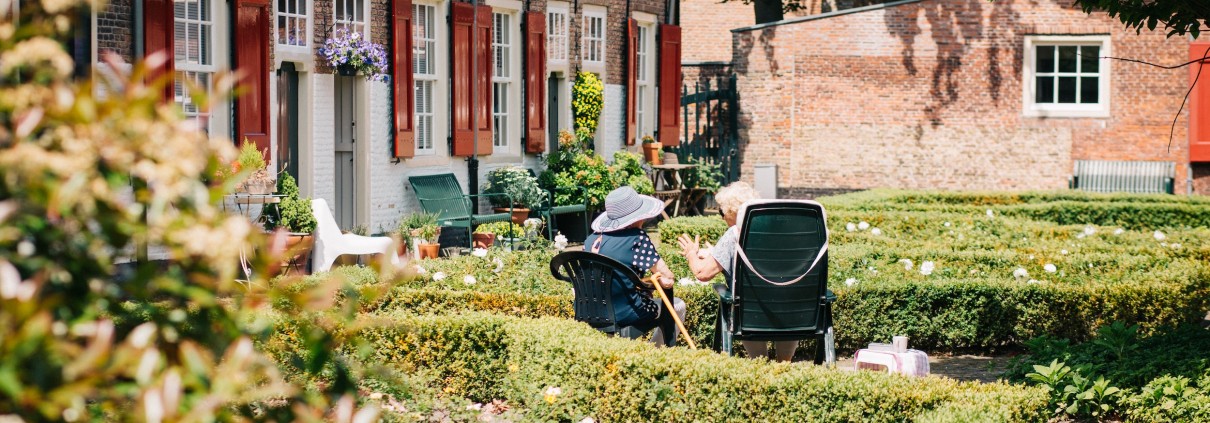Benefits Of Gardening For Dementia
It is well known that spending time outside has many positive effects for the human body and brain. Even as children, we are encouraged to spend as much time outside as possible. In today’s age, it is just as important to make sure we are getting an adequate amount of time outdoors. Being outdoors can help lower stress, decrease chances of depression and increase energy levels. One great way for people with dementia to ensure they are outside and have a moderate level of activity is through gardening.
Benefits Of A Dementia Garden
Gardening or green spaces can have many benefits for people with dementia. According to The Alzheimer’s Society, “exercising in the garden helps develop the appetite, boosts energy levels and promotes a better night’s sleep. Maintaining, as far as possible, existing skills that give pleasure and confidence.” In addition, spending time gardening or enjoying a garden can also:
- Improve sleep cycles and stress (direct sunlight).
- Lower levels of agitation and aggression.
- Decrease isolation and aggression.
- Provide a temporary distraction from fixations
- Instill a sense of ownership and community.
- Improve social interactions.
- Increase confidence due to playing the role of caregiver for garden plants and wildlife.
- Increase physical activity as well as decrease falls and injuries.
- Increase attention spans.
- Create a less ‘institutional’ environment to share with visitors.
- Foster a happier staff who find gardens relaxing and restorative during break times.
- Allow people with dementia to just have fun
A Safe Space
When creating a garden for people with dementia to enjoy or work in, there are several things to keep in mind for safety and comfort. The vegetation should be edible and there should be no sharp or pointed plants. You should refrain from using harmful chemicals. Sharp, heavy or complicated garden tools should be avoided. If there is furniture, it should be water-resistant and sturdy.
Walking paths should be quick-dry, non-slip, non-trip, well-lit, level, drainable and wide, with handrails to ensure the safety of older dementia patients. They should also be clear of stakes, sprinklers and wires. If it’s possible, design round or figure 8 paths; they encourage walking and make the garden less confusing to navigate. The garden should also be viewable by staff, while still feeling private for residents if it is located in a care facility.
What to Include in a Dementia Garden
- Variety. A mix of flowers, produce, green plants and deciduous trees (different sizes, colors and type).’
- Fast-growing plants like peas and herbs; Fruit trees and berries; Raised garden beds for functionality.
- Lots of opportunities for weeding, seeding, digging and watering.
- Distinct areas that encourage different sensory experiences.
- Areas for sun exposure as well as shaded areas.
- Covered or enclosed access for inclement weather garden viewing.
- Water features, feeders that residents maintain, fish ponds if space permits.
- Assorted, separate seating areas with safe, accessible lounge chairs.
- Garden furniture that residents bring from home (provided it’s safe).
- Occasional organized activities (chair yoga, discussion groups, a local string quartet). Afternoon refreshments.
- Sculptures (can be built and or donated by residents).
- Curiosities and fascinations – things that have to be opened or discovered.
- Off Season continuity. Gardening activities, as well as some favorite plants, can be taken indoors. Herbs grown in window boxes can be harvested, dried and canned for use in preparing special meals.
Orchard at Brookhaven has lush gardens for our residents. The garden is full of life and ready to enjoy. If you think our facility might be the place for you or someone you love, please contact us for more information.



